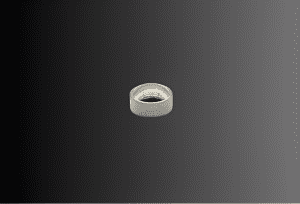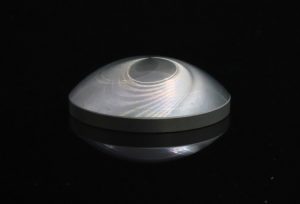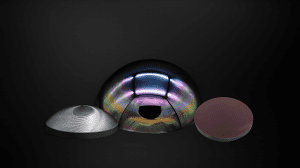Key Takeaways
- BD6 and Germanium are vital for imaging systems: BD6 excels in visible and near-infrared optics, while Germanium dominates in long-wave infrared applications.
- BD6’s exceptional refractive index, transmission properties, and dispersion make it versatile for optical elements like lenses and coatings, particularly in imaging systems.
- Germanium’s remarkable transmission properties in the long-wave infrared spectrum make it essential for thermal imaging applications in defense, security, and medical diagnostics.
- Selection between BD6 and Germanium depends on application needs: BD6 for visible and near-infrared optics, and Germanium for long-wave infrared applications.
Comparing BD6 and Germanium: A Clash of Optical Titans
In the realm of optical materials, where light manipulation and precision engineering converge, two titans stand poised for distinction: BD6 (Black Diamond 6) and Germanium. Each material boasts unique attributes and a rich history of contributions to the world of optics. Join us as we delve into the intricacies of BD6 and Germanium, comparing their properties, applications, and the role they play in shaping the future of optical innovation.


The Attributes of BD6
BD6 material, a contemporary contender in the optical arena, is known for its exceptional refractive index, transmission properties, and dispersion characteristics. This composite material has garnered attention for its versatility, finding application in a range of optical elements, from lenses to coatings. BD6’s refractive properties enable precise light manipulation, leading to the creation of high-performance lenses that deliver sharp and clear imagery. Moreover, its unique composition lends itself to anti-reflective coatings that minimize light loss and unwanted reflections, enhancing the efficiency of optical systems. BD6’s impact on imaging systems is particularly notable, as its dispersion properties aid in correcting chromatic aberrations, ensuring accurate and vibrant imaging.
The Legacy of Germanium
Germanium, on the other hand, stands as a venerable cornerstone of optical materials. Renowned for its exceptional refractive index and transmission characteristics within specific wavelength ranges, Germanium has been a staple in the creation of optical components for decades. It has found its niche in infrared optics, particularly in the creation of lenses for thermal imaging and spectroscopy applications. Germanium’s unique properties allow it to efficiently transmit long-wave infrared radiation, making it the substrate of choice in industries requiring precise thermal detection, such as defense, security, and medical diagnostics.
Applications at a Glance
BD6 and Germanium cater to diverse applications, each leveraging their distinctive properties. BD6’s prowess in imaging systems, coating efficiency, and lens design positions it as a versatile candidate for industries ranging from photography to telecommunications. Its potential for reducing chromatic aberrations and enhancing image clarity makes it a valuable asset in fields demanding precision.
Germanium, with its specialized focus on the long-wave infrared spectrum, finds prominence in fields where thermal detection and imaging are paramount. It is the material of choice for lenses in thermal imaging cameras, where its ability to capture and manipulate thermal radiation opens doors to applications like surveillance, industrial quality control, and medical diagnostics.
BD6 vs. Germanium: Tailoring Optics to Application Needs
The choice between BD6 and Germanium depends on the specific demands of the application. BD6 excels in visible and near-infrared optics, offering versatility and clarity in imaging systems and coatings. Its attributes align well with industries seeking enhanced imaging performance and reduced optical artifacts.
Germanium, on the other hand, thrives in the realm of long-wave infrared, proving indispensable for industries that rely on accurate thermal detection and imaging. Its exceptional transmission properties within this range make it an ideal choice for applications where invisible thermal radiation must be harnessed for practical purposes.
Conclusion: BD6 vs. Germanium – A Harmonious Coexistence
The comparison between BD6 and Germanium reveals two distinct optical powerhouses, each with its own domain of influence. While BD6 shines in the realm of visible and near-infrared optics, Germanium’s stronghold lies in long-wave infrared applications. Rather than a clash, the juxtaposition of these materials represents a harmonious coexistence, offering a spectrum of possibilities for optical engineers, innovators, and industries alike. As technology advances and applications diversify, BD6 and Germanium will continue to shape the world of optics, propelling us toward new dimensions of clarity, precision, and discovery.
Avantier Inc., a leading custom optical manufacturer, excels in utilizing BD6 and Germanium to create tailored optical solutions. Leveraging BD6’s refractive properties, Avantier crafts precision lenses and anti-reflective coatings for applications like photography and telecommunications. Additionally, the company harnesses BD6’s dispersion capabilities to correct chromatic aberrations, benefiting the medical imaging and aerospace sectors. With Germanium’s remarkable transmission characteristics, Avantier designs infrared lenses crucial for thermal imaging in defense, security, and industrial sectors. The company’s expertise, quality assurance, and innovative approach position it to provide diverse industries with cutting-edge custom optics, solidifying its reputation as an optical manufacturing leader. Please contact us or request for a quote on your next project.
GREAT ARTICLE!
Share this article to gain insights from your connections!




